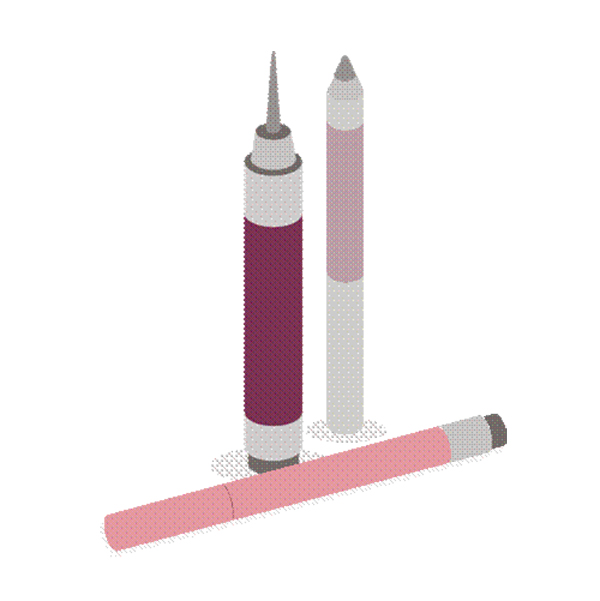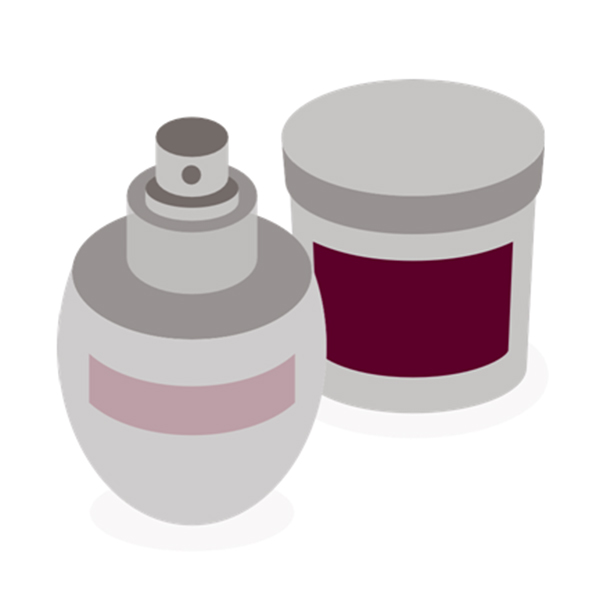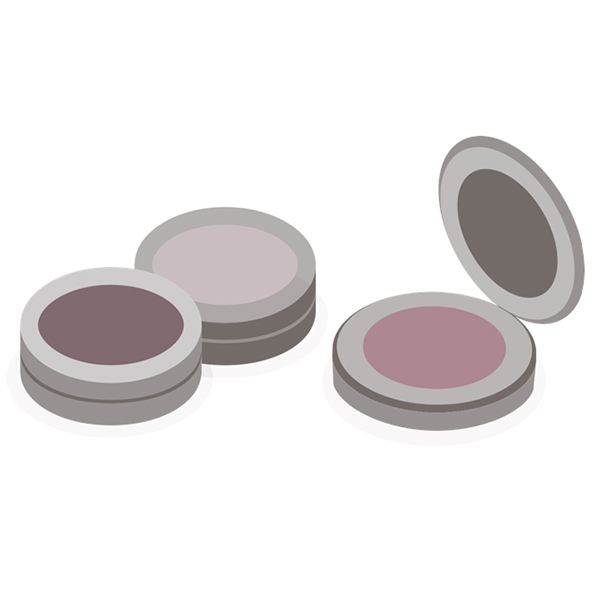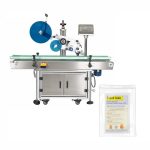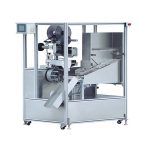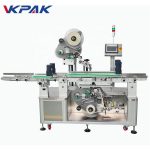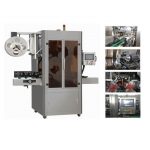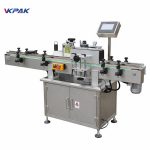Useful To Every Cosmetic Packaging Manufacturer
The Federal Food, Drug & Cosmetic Act defines cosmetics as "articles intended to be rubbed, poured, sprinkled, or sprayed on, introduced into, or otherwise applied to the human body for cleansing, beautifying, promoting attractiveness, or altering the appearance."
The FDA cosmetic labeling requirements are intended to protect consumers from health hazards and deceptive practices and to help consumers make informed decisions regarding the cosmetics they intend to purchase.
Cosmetics may not be labeled or advertised with statements suggesting that the FDA has approved the product. This applies even if the manufacturing establishment is registered or the product is on file with the FDA's Voluntary Cosmetic Registration Program.
In brief, the FDA requires cosmetics labels to:
- Identity of the product (what it is)
- Net Contents (how much is in the package)
- Ingredient declaration (what it's made of)
- Any required warning labels (potential risks associated with the use of the item)
Cosmetic packaging manufacturers know that labels are an essential part of marketing cosmetics, but they are also meant to inform consumers of a product's intended use, ingredients, net quantity, and place of manufacturing or distribution.
Because cosmetics labels come in a variety of shapes and sizes, various label application equipment exists to meet the various demands. Multi-functional label applicator machines allow you to wrap, seal, and sticker your cosmetics products at lightning speed.
No matter the cosmetics packaging that needs to be labeled, look for the best label options first, and then the right labeling equipment. The best modular labeling equipment can correctly apply your label type, adjust to container dimensions, and fit perfectly into your manufacturing line.
Cosmetics Label Types
Cosmetic Pencil & Pen Packaging Labels
From eyeliners, creamy eyeshadows, eyebrow brushes, and lip colors, you can quickly find pen and pencil-style containers when glancing down the makeup aisle.
According to Beauty Packaging, the demand for cosmetic pencils and pens is up, and cosmetic packaging manufacturers are intensifying their measures to create competitive designs and protective tamper-evident packaging that will appeal to consumers.
Cosmetic pencil and pen containers require special care as there's limited space, but all the required information must be included on the packaging, including ingredients, product name, color information, and more. Usually, this can be accomplished by a wrap-around label and an end dot label.
The wrap-around label covers the largest surface area of most containers and can span the product's entire length. A perforation can also be added to the label to provide a seal that's both easy to open and tamper-evident. Branded wrap-around labels can effectively display all FDA mandated information about the product. Additionally, labelers can apply dot labels on the closed end of the pen or pencil container to indicate color or color code.
Cosmetic Tube Packaging Labels
Lotions, creams, concealers, and hair products fit perfectly inside of tubes designed for easy dispensing. The right machine can label tube products quickly and accurately either on the front and back or around the entire container.
Wrap-around labels on cosmetic tubes provide a simple one-piece application process that can quickly roll through the machine with minimal movement. You can scale your wrap-around design to work with your tube's curvature and taper.
Since most tubes provide semi-flat surfaces on the front and back, many manufacturers use two-piece labels for efficiency. The front label typically consists of the company logo, product name, contents, and other mandated information while the back panel is home to the barcode, ingredient list, and directions for use.
A full-body sleeve label is more intensive than other labeling options, but it allows you to modify the appearance of the entire tube from top to bottom. Sleeves require extra care in placement and application to maintain quality and consistency.
Can & Jar Cosmetic Labels
Tin cans, aluminum cans, glass cosmetic jars, and acrylic jars are frequently used in the cosmetics industry to hold waxes, face creams, and other semi-liquid products.
Cans and jars often take on irregular shapes to add interest to the cosmetics packaging, including dimensional cutouts and bevels. Labeling cosmetics containers like these can be difficult, but top and bottom labeler machines can be calibrated to handle the job. Top and bottom labels can be placed simultaneously with the help of a dual reel labeler and proper synchronization.
In cases where either the top or bottom of the jar is not large enough for a standard label, the use of end dot labels is helpful. End dots are often used for symbols, codes, color swatches, or small print.
Cylinder Cosmetic Bottle Labels
Cylindrical cosmetic bottles are used for a wide range of cosmetics products. Airless pump bottles, lotion bottles, and hair sprays are examples of cylinders frequently used in the cosmetics industry. They also come in a variety of sizes and are among the most versatile containers available in the wholesale market.
A wrap-around bottle labeling machine is perfect for labeling cylinder cosmetic bottles. They are easy to work with and move seamlessly through the conveyor as the products spin down the line. If the bottle is larger, it may be better to utilize front and back labels.
Full-body sleeves can also be used for sealing smaller cylindrical containers by covering the entire surface. Lip glosses and other products often use transparent body sleeves to show off the product's color while protecting the contents from tampering.
Cosmetics Compact Labels
Used for foundation, bronzer, and eyeshadow powders, cosmetic compacts require special care during labeling. The best way to accomplish this is with top and bottom labels applied by a pressure-sensitive machine designed to use the right amount of pressure without crushing or destroying the container or its contents. Fortunately, today's labeling machines allow automated technology to center the two labels on top and bottom without misalignment.
The Importance Of Labeling Equipment
No matter how fast you’re able to bottle, jar, or fill your cosmetics product, the overall output can be limited by the speed at which you label and push to market. One major challenge experienced by many cosmetic packaging manufacturers is the printing and application of labels — but there are several good label solutions and label machine options.
Labeling machines come in a range of prices, which often seems overwhelming to manufacturers, business owners, and operations managers who are operating on a limited budget. However, efficient labeling equipment can increase productivity dramatically and pay for itself by ramping up fulfillment immediately.
Efficiency
Typically most cosmetics manufacturers start without a huge upfront capital investment, so to begin production, they manually hand label their product containers. However, the addition of one semi-automatic labeling machine, tabletop or modular, can increase productivity by almost 500%, allowing up to 150 containers to be labeled per hour.
Fully-automatic inline labeling machines are physically larger and a little more expensive than semi-automatic options, but they can label up to 500 containers per hour. This efficiency increase allows more products to be labeled at an equally accurate but faster pace.
Whether you package lotion, lipstick, foundation, or compacts, the right labeling equipment will quickly justify its cost.
Quality
The use of a semi-automatic or fully-automatic label machine gives cosmetics company owners and packaging manufacturers the ability to place a well-designed label accurately every time — and we all know that a label with a great design and precise application is a crucial marketing tool.
Label machines are faster, more consistent, and consistently accurate compared to manual hand labeling. The best labeling equipment includes stabilizers that ensure the label is placed evenly and in the same location over and over without movement vertically or horizontally.
Cost Vs. Value
While the upfront cost of purchasing or leasing new labeling equipment may seem daunting, it’s essential to evaluate all of the production costs that impact your operation.
For instance, the one-time purchase of labeling equipment will be significantly less than the cost of hiring a full-time employee to apply labels to products. If you already have workers hand-attaching labels, automating your labeling process will free them up to do more pressing and profitable tasks.
Another important part of the cost equation is the reduction of wasted and defective products coming off the line. Labeling equipment is consistent and reliable, so human error is eliminated and fewer labels are misplaced, which saves money. There is something to understanding efficiency and cost savings versus the actual cash price of the equipment. Ultimately, the value of the equipment is greater than the cost in many significant ways.
Evaluating Your Setup
Before choosing the type of label applicator machine you want, know your production goals, evaluate your current setup, and determine the right machine size. This will help you choose a labeler that meets your needs, fits seamlessly into your current operation, and makes your process more efficient.
Production Run
To properly evaluate your needs, clearly identify your labeling and production goals.
Start by deciding the quantity and speed that you want your cosmetics to move through the assembly line. Label application equipment comes in different speed ranges, so choose one that fits a pace that your line can maintain.
You'll also need to consider the potential downtime that could occur as you change labeling applications (e.g., moving from hand labeling to a semi-automatic machine).
Any labeling machine you choose will come with pros and cons, so look for a labeler that will be simple for you to set up, use, and maintain.
Space And Equipment
Once you have clear goals in mind for the amount of product you'll be pushing through your line and at what speed, look for equipment that will fit into the space you have and be easily accessible by workers. Other considerations include existing equipment compatibility and overall packaging line design.
Your production line includes a variety of machines, such as fillers, cappers, and labelers. For the sake of efficiency, it is best to purchase a labeling machine that is compatible with the equipment that you already have in your line to prevent problems. This is also an opportunity for you to decide whether you want your labeling machine to fit in line with your current machinery, or if you would prefer a freestanding labeler.
You should choose a labeler that can scale with the production line as it expands and improves over time.
Container & Label Considerations
From pump bottles to screw-top jars to push-top tins, there are a multitude of container options from which to choose. You can pick from a selection of tamper-evident and child-resistant containers that meet packaging, sealing, and labeling guidelines and regulations.
Regardless of your company’s container type, once you determine the dimensions, it’s time to decide on label size, style, and placement. The most popular types are front and back labels, wrap-around labels, and shrink-sleeve labels.
If you know that your bottle will have an unusual shape, you will need to find a labeling machine that can properly affix labels to those unique dimensions. Labeling machines come in a variety of sizes and types but are not necessarily universal to all label applications.
Quality Containers & Labels
For a sharp, professional appearance, choosing high-quality materials is essential. While the right labeler can do a great job labeling your products, if the containers being used aren't premium, they can cause issues that make your product look bad.
No matter what you choose, be sure the containers are consistent. Imperfections and inconsistencies in the size and shape can cause your label machine to misread where the labels need to be placed. Inspect your containers regularly for any signs of poor quality so that you can address them before they are filled and improperly labeled.
Label quality is another factor that will determine your overall results. Labels come in many different materials and can use a variety of glues or adhesives when applied to your containers. Poor quality labels are susceptible to tearing, bubbling, smearing, and other label performance malfunctions. Choose a well-known and trusted label brand, and give some thought to whether you prefer a paper or synthetic product.
Conclusion
As you move toward increasing your production, be it pencil eyeliners, creamy eyeshadows, lipstick, lotions, creams, concealers, hair products, etc., with professional labeling equipment, keep in mind all of the decisions you will need to make.
- Evaluate your current manufacturing line. Determine the number of containers that need labeling as well as space and design restrictions.
- Once you've set some production goals and have an idea of how you are going to integrate a new piece of labeling equipment, it is time to go shopping. Purchasing a labeling machine will require you to compare the different options, including semi-automatic, fully-automatic, tabletop, inline, or rotary. You'll also need to consider your materials (e.g., plastic pump bottle with gloss paper labels) to ensure that the labeling machine you choose will perform well.
- Remember that the labeling equipment you choose will also require ongoing maintenance and care to stay operational. You should contact a reputable dealer and get information about their service contracts and the availability of parts so that you will have the resources needed to keep your new machine in working order.
When handling cosmetic manufacturing and packaging from start to finish, it’s imperative to have reliable labeling equipment. From choosing the suppliers to buying the best-fit packaging equipment, it all matters if you want to deliver a great product that appeals to your audience.
The effective use of automation, including label printers and label applicators, offers significant improvements in productivity and output. However, finding the right labeling machine is the key. Make sure to evaluate all potential labeling machines for quality, speed, and reliability before making a purchase.

